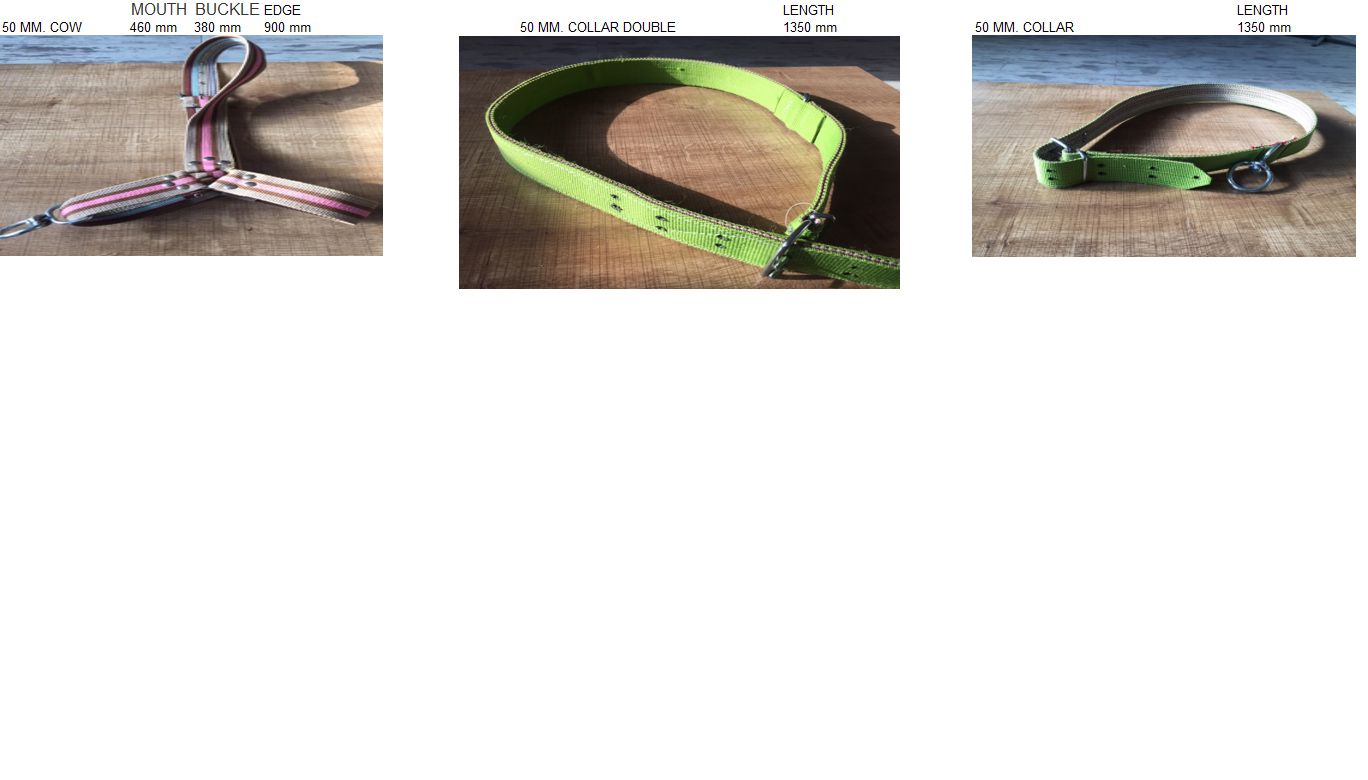Small/Big Calf - Cow Halter & Colar Webbings
An animal collar is a device that attaches to the neck of an animal to allow it to be harnessed or restrained.
Pet collar. A piece of material put around the neck of certain pet animals, such as dogs, cats, or pigs, for control, identification, or other purposes. Identification tags and medical information is often placed on collars. Collars are also useful for controlling the animal, as they provide a handle for grabbing or a means of leading. Similar collars are used with non-pet animals, such as zoo animals and livestock. Pet collars can be made of leather, nylon or metal. Metal collars are normally used for larger dogs. They can come with traditional or quick-release buckles. Collars are sometimes used for fashion purposes.
Cat collar. Similar to dog collars, but often include a bell to warn of the cat's presence. Collars used on cats are smaller and thinner than traditional dog collars. They can be made of leather, nylon, or other types of materials. Some cat collars are impregnated with flea, tick, and mosquito repellents.
Anti-bark dog collar, or bark control collar. These collars are predominantly used as a training mechanism. There are a few different types of mechanisms which can be incorporated into anti-bark collars:
Training collar or shock collar. These collars administer an electric shock to the animal in training, in order to reinforce commands and eliminate any bad habits. It may be combined with an "invisible fence," a signal wire surrounding the dog's permitted area. The dog receives a shock if it strays too near the perimeter.
Choke collars are also a type of training collars. They are made of different materials with high resistance, such as metal or various composites. This type of collar is suitable for obedience training as it tightens around the neck of the animal if it pulls. It is mainly used on dogs.
Insect collar or flea collar. Impregnated with chemicals that repel or kill external parasites, they are often a supplementary collar worn in addition to the conventional buckle collar. The effectiveness of flea collars is arguable. Although they are convenient because of their cost and accessibility, the insecticide within the collar is most effective in the neck and face area and does not provide full and complete coverage. Flea collars are considered to be more effective in preventing infestation with external parasites rather than treating an active infestation. Flea collars are best used when a proper disinfestation has been performed, both indoor and outdoor. These collars are primarily worn by cats and dogs. A number of the insecticides used in these flea collars are toxic.
Tie-up collar. Used for bulls and other cattle, this may be a chain (sometimes covered in plastic hose), or a collar of heavy leather or synthetic material fastened with a heavy duty buckle.
Animal tracking collar. Used for tracking animal migration or to locate lost pets. In its simplest form, it contains a radio beacon to allow the location of the animal to be determined. More sophisticated devices may contain a GPS tracking unit to record the animal's tracking pattern. Other sensors record water depth or other environmental information and use a mobile phone or other radio transmitter to report location and other data. It may have a timed or remotely controlled release device.


